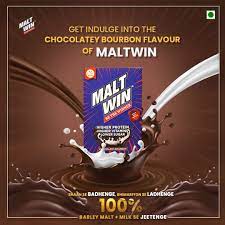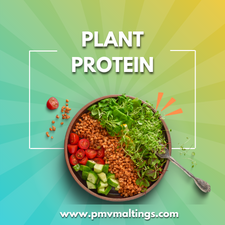
Crafting Unusual Flavors
Specialty malts in the smallest quantity are what separate craft beers from mass-produced lagers. Specialty malts give brewers a license to get artistic, brewing up a beer in a wide range of flavors, colors, and aromas, hence giving beers distinct personalities and unique taste profiles. From Munich Malt, which is toasty and caramel-like, to Roasted Malt, rich and chocolatey, specialty malts are the tools a brewer needs to craft truly memorable beers.
Specialty malts, in particular, form a very important aspect for craft brewers in creating the immense variety of beer styles enjoyed today. That means hoppy IPAs, rich porters, refreshing wheat beers, and more can all be crafted from the same source using a spectrum of choice specialty malts for that singular flavor and character.
From Field to Glass
Specialty malts-from field to glass-are an involved process, full of interest and play a very important role in brewing. Every painstaking step from selecting barley to malting and finally to brewing defines the flavors, colors, and aromas that go into making a great beer. Whether one is enjoying malt drinks, malt beer, or even malt extracts in cooking, there is just no escaping the prominence of specialty malts.
Specialty malts and their path from field to glass are significant in all ways either to brewers or the appreciation of beer enthusiasts. As long as the industry keeps moving innovations like beer powder to new malt varieties, the future of brewing seems to be bright as it has ever been. Cheers to the malts that make all this possible!
Specialty Malts and Brewing
Brewed in many different varieties and flavors, beer can easily rank as one of the delicious beverages around; but have you ever thought of what beer went through before getting to your glass? One thing making great beers different from others is the fact that malt can be considered one of its basic ingredients. Specialty malts contribute to the complexities and uniqueness of the ranges of malt by-products such as malt extract, malted drinks, and malty beer. This article tries to uncover the fascinating journey specialty malts go through right up to brewing.
Knowing Malt and Barley
But, before getting into the specialty malts, it is necessary to have an idea of what malt and barley are. Barley is a cereal grain that is used as the base ingredient for malt; this preparation is done by soaking the grain in water to start germination, and then drying it in a kiln with the express intention of arresting the process. Malting would develop the starches of the barley into fermentable sugars, which become crucial in brewing beer.
After these processes, Malt is produced and is the basis of brewing. It contains all the sugars that are needed for fermentation, plus the carbon dioxide and alcohol that the yeast will produce from them. Besides allowing for fermentation–with the fermentable sugars–malt also gives the flavor, color, and body of beer.
The Role of Specialty Malts in Brewing
Base malts like pale malt provide the biggest amount of fermentable sugars required for the production of beer, while specialty malts are used to introduce depth, complexity, or specific characters. These are kilned or roasted longer, thus giving way to different flavors and colors ranging from light caramel to dark chocolate and roasted coffee.
Different styles of beers owe their flavor and aroma to special ingredient malts, uniquely. For example, roasted barley or chocolate malt is used to ascribe stout beer with richly roasted coffee notes, while a pilsner probably has acquired its biscuit-like flavor from lightly klined speciality malts. Fundamentally, special ingredient malts are the base of various kinds of beers, being an abundant number and quite complex
Malt Extract: Sweet yet Versatile Ingredient
Malt extract is the concentrated syrup or powder from malted barley. This is done through mashing malted barley in hot water, extracting the sugars, then evaporating the liquid to get thick syrup-liquid malt extract-or dried further to get powder called dry malt extract. Many brewers like malt extract, both for home brewing and craft brewing, since it keeps the brewing process simple but yields full-bodied flavours of malt.
Its applications are as common as in other products, for instance, beverages based on them without alcohol, foods flavored with malts too, and so on, not being limited to beer brewing only. Rich, sweet, and malty tastes that people love so much can be contributed by this diverse usage range in relation to wonderful qualities given by this versatile product.
Malt Drinks: A Nourishing Beverage
Malt drinks are non-alcoholic beverages made from malted barley and are mostly mixed with other products like milk or chocolate. The drink is popular in many cultures in the world, especially in Africa, the Caribbean, and parts of Europe. Malt drinks are recognized by the high level of sweetness, and they are normally used as nutritional enhancement.
Malted barley in producing malt drinks undergoes brewing followed by filtering and pasteurizing the liquid. Unlike beer, fermentation is not involved in making malt beverages meaning they do not contain alcohol. However, they retain strong malty flavors that make them favorites in most parts of the world.
Malt Beer: The Art of Brewing
While all beers contain malt, malt beer usually puts great emphasis on its part in the flavor profiles. They may be dark or light depending on the type and quantity of specialty malts used.
When it comes to malt beer making, the type of malts to be used is of considerable significance. The brewers decide upon specific varieties of specialty malts depending on what kind of taste, color, and scent they want for their final brew. Caramel malts impart body and sweetness to the beverages, whereas roasted grains contribute deep roasted flavors besides an opaque color.
Beer Powder: Innovative Use of Malt
Of the newer products from malt houses, the development of beer powder is an innovation. When beer is dehydrated, it leaves a concentrated powder that may be rehydrated into beer or used as a flavoring both in beverages and foods. Currently, it is not as widespread, or commercially available, as dehydrated milk or coffee, although it does offer exciting potential for brewers and food manufacturers alike.
Beer powder retains the flavors and aromas of the original beer; therefore, it is an interesting ingredient for chefs and food manufacturers who want to embody flavors of beer into their end products. The maltiness can be used in sauces, marinades, and for adding that malty twist to some baked goods. For brewers, this provides an easy way of incorporating malt flavor into the brew without having to handle large quantities of liquid malt.
Quality of Barley and Malt
Malt quality influences the brewing process in a number of ways: primarily, a direct impact on the quality of beer brewed and dependent on barley quality selected for malting. Good barley varieties are selected and grown, following the best agricultural practices, which prepare them with the best-suited characteristics for malting and consequently brewing. Protein, kernel, and enzyme contents are decisive characteristics in barley for malting.
Carefully watched for quality against specific brewer requirements after malting, consistency in color, flavor, and fermentability are the point of highest quality malt that would be contributive toward a successful brew.


